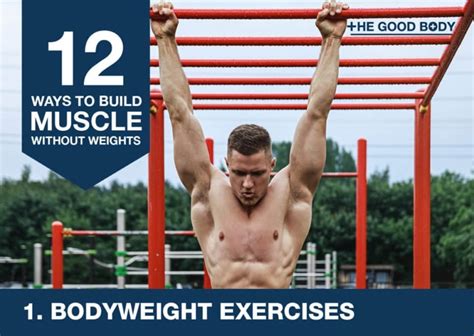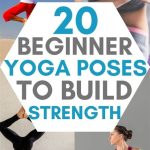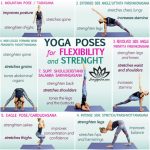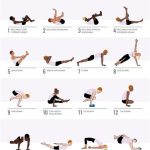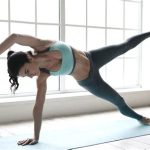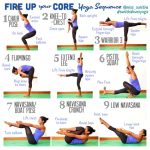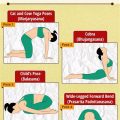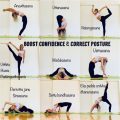Unlocking Strength: Effective Strategies to Build Strength Without Lifting Weights
For many, the first image that comes to mind when they think of building strength is the gym, packed with barbells, dumbbells, and weight machines. However, it’s possible to develop significant strength without touching a single weight. Through bodyweight exercises, functional movements, resistance bands, and more, anyone can achieve muscle growth, endurance, and improved overall fitness without relying on traditional weightlifting. This article will explore diverse strategies to help you build strength without lifting weights, providing a comprehensive guide to alternatives that maximize strength, mobility, and functionality.
Key Concepts in Building Strength Without Weights
To understand how to build strength without weights, it’s important to grasp some fundamental concepts of muscle development, resistance training, and functional fitness. Building strength revolves around several key principles:
- Progressive Overload: Gradually increasing the intensity or difficulty of exercises to continue challenging the muscles.
- Muscle Activation: Engaging the right muscles during exercises to ensure effective strengthening.
- Bodyweight Resistance: Using your own body weight as resistance to perform exercises like push-ups, squats, and planks.
- Core Stability: Strengthening the core muscles to enhance balance and improve overall body strength.
- Time Under Tension: Increasing the time muscles spend under tension during exercises to promote growth and endurance.
Historical Context: Training Without Weights Through Time
The concept of building strength without weights is not new. For centuries, humans have relied on bodyweight exercises, manual labor, and functional movements to stay fit and strong. In ancient Greece, soldiers and athletes performed calisthenics—movements like pull-ups, push-ups, and squats—to prepare for battle and competition.
In the early 20th century, physical culture movements emerged, promoting exercises that did not require equipment. Famous practitioners such as Charles Atlas and Joseph Pilates emphasized the use of natural resistance to build functional, flexible bodies.
Current State of Non-Weight-Based Strength Training
Today, bodyweight exercises, resistance bands, and other forms of non-weight-based strength training are gaining popularity, particularly in functional fitness programs and calisthenics communities. With the rise of home workouts and an increased focus on functional movements, many individuals now seek alternatives to traditional weightlifting that offer versatility and convenience.
From CrossFit to HIIT (High-Intensity Interval Training), bodyweight exercises have become a cornerstone of modern fitness programs. The combination of bodyweight resistance, mobility exercises, and core strengthening has been shown to improve not only muscle growth but also cardiovascular health, flexibility, and overall functionality.
Practical Applications: Strength-Building Strategies Without Weights
Let’s explore some of the most effective ways to build strength without lifting weights. These techniques can be adapted to various fitness levels and goals, making them accessible for everyone from beginners to advanced athletes.
Bodyweight Exercises
Bodyweight exercises are a foundational element of non-weight-based strength training. Some of the most effective include:
- Push-ups: Target the chest, triceps, shoulders, and core. Variations like diamond push-ups, wide push-ups, and decline push-ups can increase intensity.
- Squats: Engage the glutes, quadriceps, hamstrings, and core. Variations like pistol squats and jump squats add extra challenge.
- Planks: Strengthen the core, shoulders, and lower back. Variations like side planks and plank-to-push-up transitions offer added difficulty.
- Lunges: Build leg strength and stability. Reverse lunges and lateral lunges are excellent for targeting different muscle groups.
- Dips: Work the triceps, shoulders, and chest. Bench dips or parallel bar dips are effective alternatives to tricep-focused weight exercises.
Resistance Bands
Resistance bands provide a versatile way to add external resistance to bodyweight exercises, simulating the effect of weights while offering increased flexibility and range of motion. Key exercises include:
- Band Pull-Aparts: Strengthen the shoulders, upper back, and rotator cuff muscles.
- Resistance Band Squats: Add difficulty to squats and lunges by incorporating a band around the legs.
- Band Chest Press: Simulate the chest press exercise by anchoring a resistance band and pressing forward.
- Banded Rows: Mimic the effects of dumbbell or barbell rows to target the back muscles.
Isometric Holds
Isometric exercises involve holding a position under tension for an extended period. These exercises challenge muscles in a static position and build strength by increasing time under tension. Examples include:
- Wall Sits: Hold a seated position against the wall to engage the quadriceps and core.
- Isometric Planks: Hold a plank position for as long as possible to build core stability and strength.
- Static Lunge Hold: Maintain a lunge position to target the legs and core.
Case Studies: Real-World Examples of Strength Without Weights
Many athletes and fitness enthusiasts have built impressive strength without relying on weights. Below are case studies showcasing individuals who have used bodyweight training, resistance bands, and functional exercises to achieve remarkable results.
| Name | Training Method | Achievements |
|---|---|---|
| Frank Medrano | Calisthenics | Renowned bodyweight training expert with extraordinary upper body strength |
| Ido Portal | Movement Culture | Developed incredible body control and strength through functional, weightless movements |
| Al Kavadlo | Progressive Calisthenics | Demonstrates the ability to build total body strength without weights |
Stakeholder Analysis: Who Benefits from Weight-Free Strength Training?
Weight-free strength training appeals to a broad audience, from fitness beginners to professional athletes. The stakeholders who benefit include:
- Home Fitness Enthusiasts: Individuals looking for affordable and space-efficient workout options.
- Athletes: Athletes can incorporate bodyweight exercises to improve agility, flexibility, and functional strength.
- Rehabilitation Patients: Bodyweight exercises are often used in rehabilitation to build strength without overloading injured joints or muscles.
- Travelers: For people on the go, bodyweight exercises and resistance bands are perfect for maintaining strength without access to a gym.
Implementation Guidelines: Creating a No-Weights Strength Program
To create an effective strength program without weights, follow these guidelines:
- Warm-Up: Always begin with dynamic stretching or light cardio to prepare your body for exercise.
- Progressive Difficulty: Gradually increase the intensity by adding more challenging variations or resistance bands.
- Compound Movements: Focus on exercises that engage multiple muscle groups simultaneously for maximum efficiency.
- Consistency: Aim to train at least three to four times per week to see consistent progress.
- Recovery: Ensure sufficient rest between sessions and incorporate stretching to promote flexibility and reduce injury risk.
Ethical Considerations: Promoting Inclusivity and Accessibility in Strength Training
One of the major ethical benefits of building strength without weights is its inclusivity. Many individuals lack access to expensive gym equipment, so promoting bodyweight and resistance-based training options can help democratize fitness. Additionally, these exercises are suitable for people with various physical abilities, as they can be easily modified to match different fitness levels.
Limitations and Future Research Directions
Despite the many benefits of non-weight-based strength training, there are some limitations. Bodyweight exercises can be challenging to progress for individuals seeking maximal strength or hypertrophy (muscle growth), especially as they reach advanced levels of fitness. To address this, future research could focus on combining bodyweight exercises with new technologies, such as smart resistance bands or augmented reality training, to simulate weightlifting experiences without the need for traditional gym equipment.
Expert Commentary
The field of strength training without weights continues to evolve, with more practitioners adopting this approach for its versatility and practicality. Experts agree that while bodyweight exercises might not fully replace heavy weightlifting for advanced strength athletes, they offer a comprehensive solution for general fitness, functional strength, and mobility improvement. As the fitness industry shifts towards more holistic approaches, the future of strength training may see a blend of traditional weightlifting with bodyweight and resistance-based methods.
